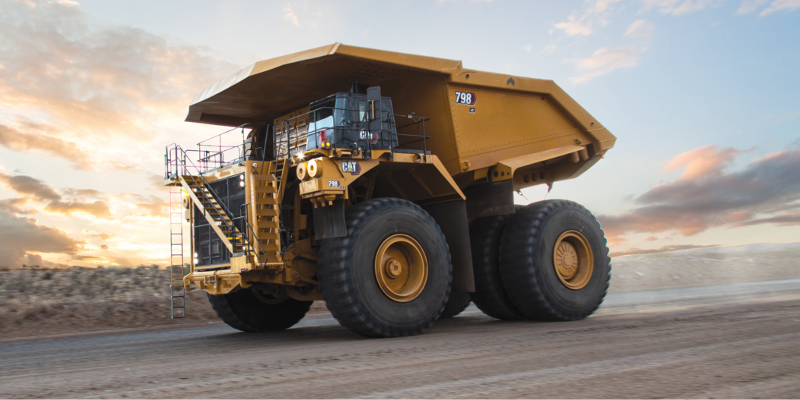PDAC: Canada, Australia risk falling behind in investment race, BHP boss says

Canada and Australia could trail emerging mining nations such as Argentina if their governments don’t speed up permitting and lower costs, BHP (NYSE, LSE, ASX: BHP) CEO Mike Henry warned.
Countries such as the United States, Argentina and Saudi Arabia are making “sizeable” efforts to reform their mining sector and attract capital, Henry said Sunday in Toronto. At the same time, established natural-resource powerhouses such as Canada and Australia have seen their global attractiveness erode.
Henry’s comments come as the US administration of President Donald Trump looks to spur domestic production of critical minerals in part by overhauling permitting requirements. According to a June 2024 report by S&P Global, the US has the second-longest average development times in the world of the 23 countries they evaluated.
“Just as is the case for business, nations need to remain competitive on the global stage or they will be left behind in the race for metals and minerals investment programs,” Henry said in a speech and subsequent question and answer session at the annual Prospectors & Developers Association of Canada conference. “The competitive landscape isn’t static.”
Benchmarking
If a country isn’t constantly benchmarking, “it runs the risk of falling behind,” added Henry. “Once capital mobilizes in one direction, sometimes it can be quite hard to mobilize in the other direction.”
Permitting delays are a key irritant for miners. New mines in Australia and Canada typically take from 10 to 15 years to get built, compared with as few as five years in a country like Chile, Henry said.
Although Canada possesses many advantages, including plentiful natural resources and a strong ecosystem that includes engineering firms with mining experience, the country is no longer as attractive to foreign investment as it once was, the Canadian-born Henry said.
Canada’s competitiveness has dropped from eighth to 19th in the past four years in the World Competitiveness Yearbook published by the Switzerland-based International Institute for Management Development, and the country needs a renewed reform agenda to bolster mining competitiveness, he said.
Issues in Australia include electricity prices that are about 50% higher than in the US and combined tax and royalty levels that are “simply uncompetitive for capital,” Henry said. To make matters worse, the country has limited reserves of “future-facing commodities” like copper, nickel or lithium, he added.
“Australia can no longer rely as heavily on its geological advantages but instead must exercise its policy muscles to improve competitiveness,” he said. “It needs to confront the fact that productivity growth is sluggish across the broader economy and has fallen in the mining sector across the past two decades.”
‘Can-do’
As a result, policymakers “need to examine the entire set of policy and regulatory settings and ask whether they are making the country more or less competitive globally,” the BHP CEO added.
It’s a different story in the US, where multiple initiatives are under way to expand mining output. Henry spent last week in Washington to meet with US lawmakers and says he came away encouraged by the “can-do, make-it-happen attitude” in his meetings.
Compared with Canada and Australia, “other countries are mobilizing a more urgent effort and have higher ambitions around this. That includes the US, who’s currently behind the curve but could very well end up being far ahead of the curve if they carry through with some of their current intent,” he said.
Henry is also optimistic about Argentina, given its reserves of copper, gold and lithium. In copper alone, projects representing about 1.2 million tonnes of annual output are in the pipeline, with “much more to come,” he said.
BHP and Canada’s Lundin Mining (TSX: LUN) recently closed the $4.1 billion acquisition of Argentina’s Filo Corp as part of an increased focus on copper. BHP’s contribution was about $2 billion, Henry said.
“Argentina could very well become a top 5 copper producer,” Henry said. “Argentina is serious about competing globally,” he said. “They know they need to attract capital to make it happen and they are focused on unlocking the opportunity. Our sector is taking notice.”
Reforms
Since taking office in December 2023, Argentinian President Javier Milei has taken steps to make the country more attractive for mining investment, primarily by pursuing deregulation, reducing inflation, and improving economic stability.
Last year, the Milei administration introduced the Incentive Regime for Large Investments, offering 30-year tax, trade, and foreign-exchange benefits for projects investing at least $200 million in sectors such as mining.
The reforms have attracted some large investments: In December, Rio Tinto (NYSE, LSE, RIO, ASX: RIO) announced a $2.5 billion investment to expand its Rincon lithium project. This development is expected to position the country as a leading lithium producer.
Canada’s First Quantum Minerals (TSX: FM) plans to invest $3.6 billion in the Taca Taca copper project in Salta province. If realized, this could elevate Argentina into the top 10 global copper producers.
Having abandoned attempts to acquire Anglo American (LSE: AAL), BHP is busy pivoting to organic growth. Up to $10 billion is being spent on Chile’s Escondida, the world’s largest copper mine, in which Rio Tinto has a 30% stake.
Urbanization and growing electrification are two of the reasons the use of critical minerals is projected to soar in the coming decades. Copper, for one, is facing a 70% increase in demand by the middle of the century, Henry said. Some $250 billion will be needed over the next five to 10 years to keep pace with the surging appetite for metals, BHP forecasts.
More News
Top EU miner faces uphill battle to tame accelerating cash burn
April 11, 2025 | 07:26 am
Andrew Forrest to face deposition in Tudor Jones suit
April 11, 2025 | 07:20 am
{{ commodity.name }}
{{ post.title }}
{{ post.date }}




Comments